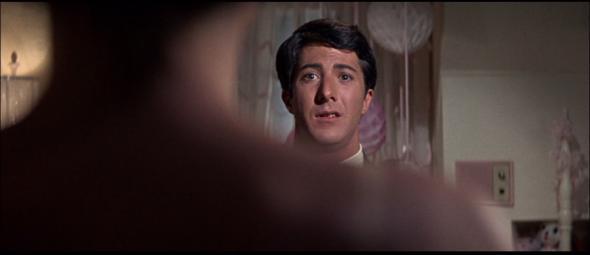“There are only three kinds of scenes: a fight, a seduction or a negotiation,” the protean director Mike Nichols, who died yesterday at age 83, liked to say. It was an idea he often returned to in interviews, often appending as a coda this bit of advice from his former comedy partner Elaine May: “When in doubt, seduce.” It seems an astonishingly simple formulation on which to base a six-decade career spent moving effortlessly from stand-up comedy to theater to film and back to theater again, racking up landmark achievements in every field while always somehow keeping a finger on the pulse of what America was ready to see, needed to see, at that political and cultural moment: the sexual frankness and chilly suburban satire of The Graduate, the impassioned labor activism of Silkwood, the anguished vision of HIV-ravaged gay culture and Reagan-era indifference in Angels in America.
The best scenes from Mike Nichols’ films are seductions, negotiations, and fights all at once. He delighted in moments of high theatricality, intricately blocked verbal showdowns between characters with multiple clashing agendas unknown to each other and sometimes to themselves. But he also excelled at framing such moments cinematically, making the camera movement and music and editing all matter as much as the (always excellent, often world-class) acting.
That ability to transcend staginess while preserving the dramatic power of live theater is evident even in Nichols’ debut film, which Warner Brothers approached him to direct after an impressive string of stage successes. Who’s Afraid of Virginia Woolf? (1966) is a candidate for static-filmed-play syndrome if there ever was one, adapted (by Ernest Lehmann) from a one-set play by Edward Albee and filmed principally in a single cramped room containing two jumbo-scale movie stars, Elizabeth Taylor and Richard Burton. But in the scene below—in which Taylor’s already-drunk Martha bitterly acquaints their just-arrived guests to her only slightly less drunk husband George—watch how the camera (as wielded by then-emerging star DP Haskell Wexler) moves smoothly from a static deep-focus setup to accompanying Taylor’s face in tight closeup as she paces the room. In this clip, the camera’s freedom of motion creates cinema-vérité-style intimacy, but there’s also a precision to the way Nichols frames each dramatic beat, including a pair of shaky expressionistic closeups of the mortified guests (George Segal and Sandy Dennis) that seem intended to approximate Martha’s disoriented inner state.
If that’s an example of a Mike Nichols fight, here’s one of his greatest seductions, now embedded in the cultural memory of generations of film lovers: Mrs. Robinson’s long-form defloration of Benjamin Braddock (Dustin Hoffman) in Nichols’ second film, The Graduate (1967). It takes just over nine minutes of screen time for Anne Bancroft’s wily matriarch to go from “accidentally” entering Benjamin’s bedroom (where we first see her through the water of the fish tank, like a shark who’s just swum into the frame) to trapping him in her daughter’s bedroom across town. During that time, the two of them play out a deliciously uncomfortable comedy of dissimulation and misdirection, filmed at first in stationary long takes and then, toward the end, in a string of rapidly edited closeups. As Benjamin whips his head around to see his parents’ friend standing stark naked against the door, Nichols gives us the exact same shot three times in quick succession—a radical departure from the realistic film grammar of the preceding scene, but a perfect way to invite us into this young man’s scrambled consciousness.
And finally, here’s a wonderful example of a Mike Nichols negotiation, from the director’s last film, 2007’s Charlie Wilson’s War. This multipart scene takes place in the office of Charlie Wilson (Tom Hanks), a wheeler-dealer Texas Congressman who’s under investigation for his secret attempts to help fund the mujahideen rebels in Afghanistan. Nichols turns Wilson’s office, with its two separate entrance doors, into the set of a delirious stage farce, with a series of perfectly timed entrances and exits from a nervous gaggle of note-taking assistants headed up by Amy Adams and an impossible-to-fluster CIA agent played by Philip Seymour Hoffman. The whole scene builds to a visual punchline that’s revealed in an abrupt whip pan to an object on Wilson’s desk, ending a highly theatrical scene with a sudden cinematic flourish. That was Mike Nichols’ camera at work—a camera that was, like the director himself, somehow always exactly where it needed to be.
